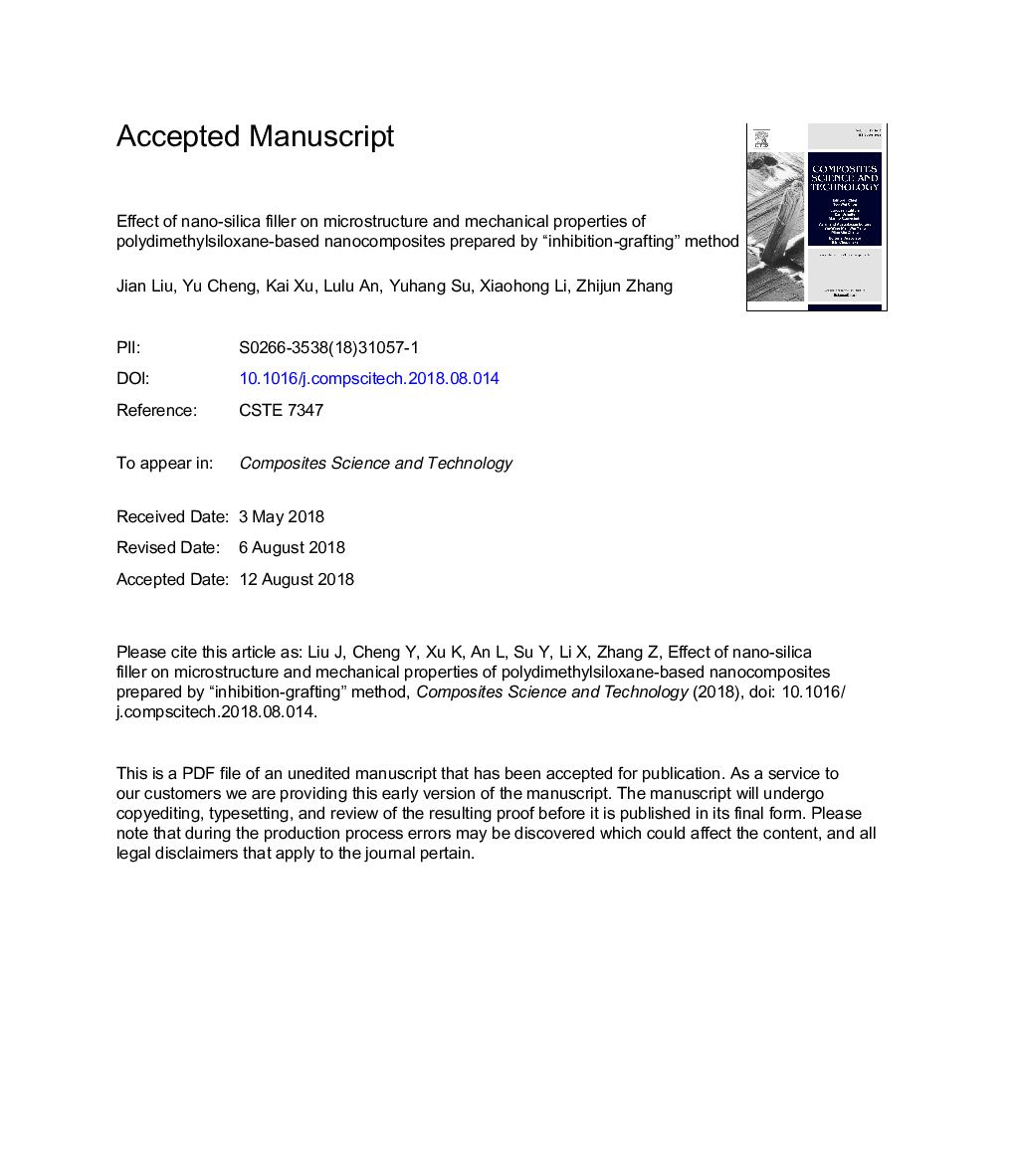| Article ID | Journal | Published Year | Pages | File Type |
|---|---|---|---|---|
| 11004254 | Composites Science and Technology | 2018 | 33 Pages |
Abstract
Silica/polydimethylsiloxane nanocomposites (denoted as SiO2/PDMS) prepared by physical mixing exhibit poor processing flexibility and strength associated with the high viscosity effect and low addition amount of silica during the fabrication of room-temperature vulcanized PDMS elastomer. Thus a facile and scalable one-step “inhibition-grafting” method was established to graft polydimethylsiloxane (PDMS) onto the surface of DNS-2 (a kind of dispersible nano-silica with network structure) to yield nano-SiO2/PDMS high-performance nanocomposites. Their microstructure and chemical structure were characterized by TEM, GPC, FTIR and TGA. The viscosity and rheological properties were evaluated, and their mechanical properties of the as-prepared nano-SiO2/PDMS elastomers were measured as well. Findings indicate that PDMS chains are grafted on the silica surface via covalent bonding and the chains either grafted on the silica or in free state interpenetrated silica network thereby forming a kind of interpenetrating network. This kind of interpenetrating network and short PDMS chains can provide more crosslinking sites, leading to low viscosity and high mechanical properties of SiO2/PDMS composites. Besides, the nano-SiO2/PDMS elastomers containing over 16 phr (phr: parts of silica per hundred parts of PDMS by weight) of nano-silica exhibit shear thinning behavior, which corresponds to the transformation from Newtonian fluids to non-Newtonian fluids associated with the formation of whole interpenetrating network between nano-silica and PDMS chains. In summary, the nano-SiO2/PDMS elastomers exhibit a low viscosity and good mechanical properties, which is favorable for promoting their applications in the industry of high performance silicone materials.
Related Topics
Physical Sciences and Engineering
Engineering
Engineering (General)
Authors
Jian Liu, Yu Cheng, Kai Xu, Lulu An, Yuhang Su, Xiaohong Li, Zhijun Zhang,
